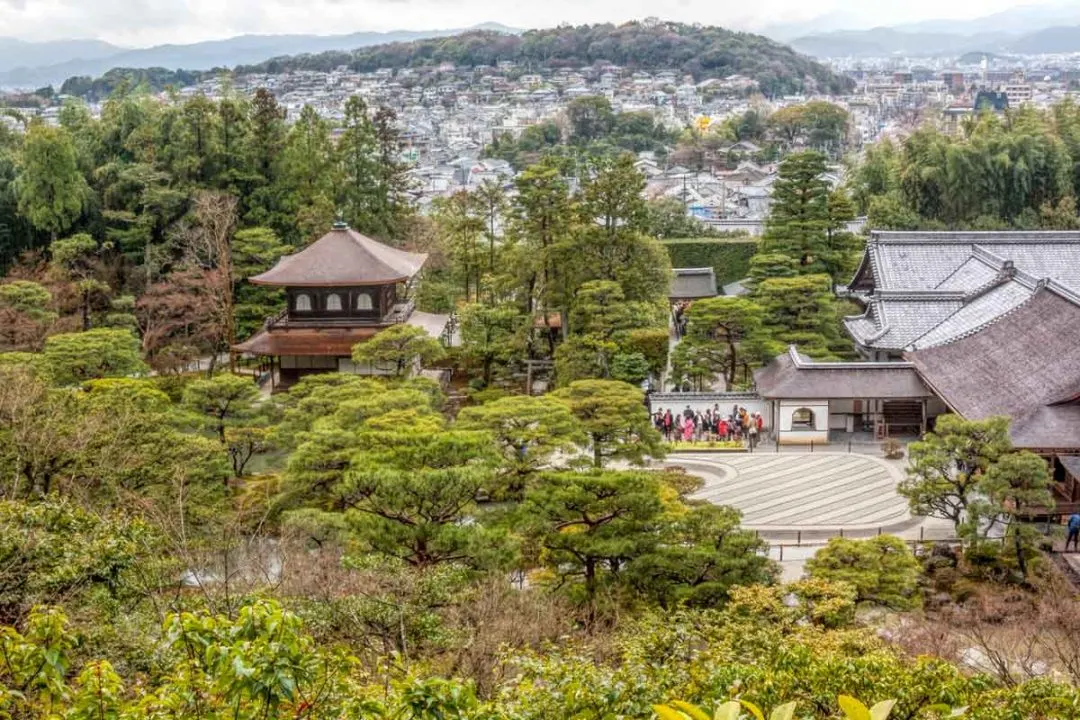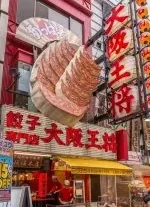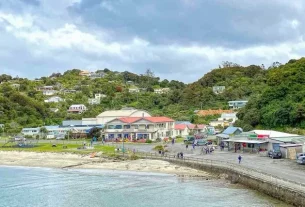Ginkaku-ji temple, also known as the Silver Pavilion isn’t actually silver but when it comes to history, culture, beauty and incredible gardens it has it all! Read on to find why you’ll want to find time for this gorgeous spot on your next visit to Kyoto.

Exploring the Silver Pavilion & surrounds
The Ginkaku-ji temple is in the northeast Higashiyama district of Kyoto, nestled snuggly into the foothills at the northern end of the Philosophers path.
The video below gives an overview of the temple, its gardens and the surrounding area.
Getting to Ginkaku-ji from Kyoto Station
On our first visit here we were staying at the Hotel Granvia in Kyoto station and on subsequent visits, we have stayed either near the station, in central Kyoto or the Southern Higashiyama area, these directions will help from each of these areas.
Kyoto station is about a 7.5km walk from the Silver Pavilion temple so we caught the bus from the depot which is directly in front of the station to the Ginkaku-ji Mae bus stop which is the closest one to the temple. On the way home we made our way back on foot via the Philosophers Path to Central Kyoto and used the subway back to the station later in the day.
We rarely use taxi’s in Japan unless we’re dealing with luggage and while buses aren’t my favourite mode of local transport they are easy enough to navigate and the subway just isn’t a convenient option to use to get to some of Kyoto’s highlights like Ginkaku-ji.

We jumped on the Raku 100 bus which is one of the tourist loop buses around Kyoto, the benefit of getting these once or twice early in your trip is that they are aimed at visitors to the city and the announcements are in English so you can quickly get a feel for your way around. The Raku 100 stop at the station is D1, the closest stop to the ticket centre.
Local buses 3 or 5 will also get you there but stop at the Ginkakuji-michi bus stop it is slightly further away but very close and easy to find your way.
The Raku 100 bus takes about 40 minutes from the station and allow up to 10 minutes more for the local bus routes. It’s not a quick trip for the relatively short distance but it only costs a flat Y230 to go anywhere along the route.
Technically by getting the subway then a local bus you could do it quicker but the extra connections and finding your way out of a subway station to the right bus stop for the optimal connection is unlikely so it may cost more, take longer and really be no more comfortable.
From the bus stop you walk past the usual street of shops and food stalls at the start of the philosophers path and leading up to the temple. If you’re a lover of street food you might want to grab a snack and sit down as we did under the sakura trees to eat it before continuing on to the temple. Japan isn’t big on street food like most of the rest of Asia is but what they do have is generally delicious.

The history of Ginkaku-ji
Ginkaku-ji was built in 1482 by the Shogun Ashikaga Yoshimasa as his rural home. It was modeled on the style of his Grandfathers villa Kinkaku-ju (the Golden Pavilion) at the foot of Kyotos northern mountains. It wasn’t until after Ashikagas death in 1490 that Ginkaku-ji became a Zen Buddhist temple in line with his final wishes.
Ashikaga Yoshimasa isn’t remembered as a great Shogun and ruler, in fact his rule is generally referenced in the literature as being weak and contributing to a period of significant unrest in Japans history.
He was however a great lover of the arts and his gift to Japan is probably better appreciated today than it would have been at the time. The Higashiyama culture fostered through the temple after his death was for the people not just the aristocracy. It was a time when many of the arts we associate with Japan were developing and being fine tuned, the tea ceremony, noh theatre, ikebana flower arranging, exquisite garden design and architecture.

When you arrive at the temple you enter through a modest traditional wooden gate then follow a path lined with a tall hedge on either side that feels more European in style than Japanese. The area is almost like a palate cleanser so that when you exit the hedged path two uniquely Japanese art forms strike you with their full force, the silver pavilion and the exceptional attention to detail in the expansive and perfectly maintained sand gardens.
Two buildings in the Ginkaku-ji complex today date back to the original build. The first is the silver pavilion itself which is known as Kannondon or the Kannon Hall. It’s two levels follow two different architectural styles in the same way the Golden Pavilion does and inside it is housed a Kannon statue, the Goddess of Mercy.
Despite its name the silver pavilion has never been silver clad and possibly it was never intended to be, the name originated significantly later and may have been intended to both differentiate it from and align it to Kinkaku-ji.
While the Golden Pavilion is unique and striking, the aged wood of Ginkaku-ji is definitely more in keeping with the simple and classic aesthetic that Higashiyama culture has become synonymous with. The silver pavilion embodies the Japanese concept of wabi – sabi; the beauty of the ever-changing and impermanent nature of all things.


The second original building is the Togudo that you see here in the right of this photo below. It’s a smaller building and contains a study room 4.5 tatami mats in size which is a traditional Japanese measure equating to around 4 square metres. This is one of the oldest examples of Shoin architecture still existing and is the style predominantly in use today for tatami matted rooms.

The gardens and vistas from the hillside over the complex are beautiful but it’s the sand gardens that most stood out to me. The sand garden is called the Ginshadan which means the sea of silver sands, it’s beautifully maintained and really sets off the buildings, lake and gardens.


Over the years I’ve heard a few people say that the ‘Silver Pavilion’ was a disappointment given that it’s not actually silver but personally it was a garden and temple that I really enjoyed in Kyoto. It may be unexpected if you have visited the Golden Pavilion in Northern Kyoto first and expect more of the same but it is actually stunningly beautiful in its contrast.
View the Silver Pavilion from above
As you wind your way past the Silver Pavilion itself, the sculpted gravel gardens and through the villa gardens you will come to a moss lined path up the hillside.

Take care not to slip as the stones can be a little slippery when wet but it’s not far up and the view after such a short climb is incredible out over the temple itself but also far into Kyoto City behind that.

Other attractions near Ginkaku-ji
This was our starting point for the day and being early meant we were ahead of the crowds and able to enjoy the gardens in our own time. From here we walked back south along the Philosophers Path, taking in the beauty of the sakura blooms and exploring the shops and temples along the way. There are many other gems to explore along this trail including Eikando Temple, Honen-in, Nanzen-ji and a little further on, Heian Shrine.
If you’ve been to Ginkaku-ji in Kyoto please share your experience and thoughts on it in the comments below.
Originally published: 6 April, 2016 6:00 am



